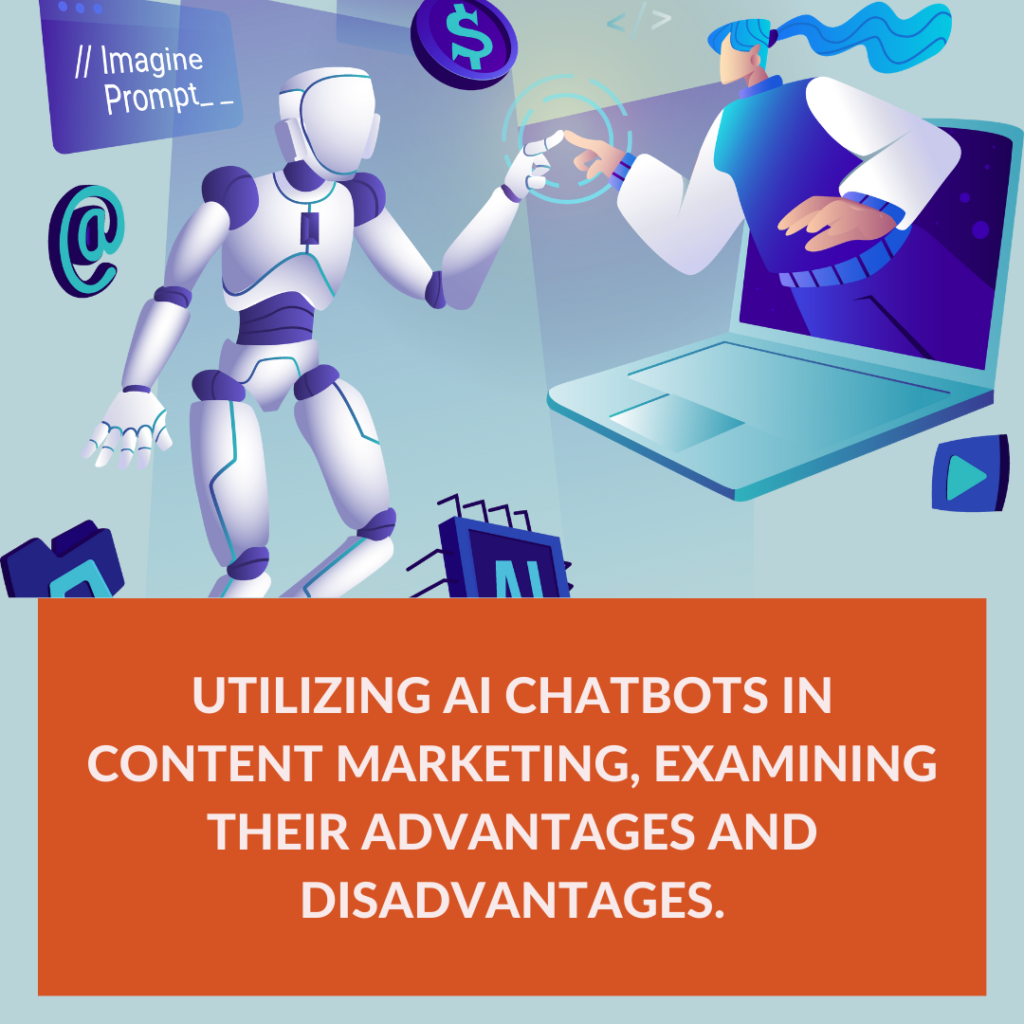
Here’s a breakdown of how AI-based chatbots can be used in content marketing and their pros and cons.
Effective Ways to Use AI Chatbots in Content Marketing
- 24/7 Customer Support: Chatbots offer instant, round-the-clock availability to answer basic questions and resolve simple issues. This frees up human customer service agents while keeping customers engaged.
- Personalized Content Recommendations: Chatbots can learn user preferences and suggest relevant articles, blog posts, videos, or other content tailored to their interests.
- Lead Generation and Qualification: Bots can initiate conversations with website visitors, qualify potential leads with pre-set questions, and pass warm leads to sales teams.
- Interactive Content Experiences: Chatbots can offer quizzes, polls, or conversational journeys within content. This adds an element of fun and engagement, boosting content memorability.
- Data Collection: Chatbots gather valuable data on user behavior, preferences, and pain points. This data can be used to improve content strategy and refine marketing campaigns.
Advantages of Chatbots in Content Marketing.
- Improved Efficiency: Chatbots automate repetitive tasks, reducing the workload on marketing teams and improving efficiency.
- Enhanced User Experience: They provide quick answers, tailored content, and make complex information easily accessible.
- Scalability: Bots handle multiple customer interactions simultaneously, allowing scalability regardless of business size.
- Cost-Effective: Reduces costs for personnel or external marketing support.
- Data-Driven Insights: Their constant data collection can offer powerful insights to marketers.
Disadvantages of Chatbots in Content Marketing.
- Limited Conversation Capabilities: Chatbots cannot replicate the nuance and empathy of human conversation, especially for complex or emotional matters.
- Potential for Errors: Misunderstandings or wrong information may frustrate users if the AI bot needs to be better developed.
- Lack of Creativity: While AI can generate some content, a chatbot cannot replace human marketers’ originality and strategic insight.
- Maintenance and Updates: Chatbots require regular updates and optimization to maintain effectiveness and address potential bugs.
The Human Touch
There is a valid concern that overreliance on chatbots may erode the human touch. That’s why an intelligent content marketing strategy incorporates chatbots strategically:
- Define Their Role: Chatbots excel at routine tasks and handling FAQs. Their goal is to enhance the customer experience, not entirely replace humans.
- Hybrid Approach: The option to switch seamlessly to a human agent for complex or sensitive situations.
- Empathy in Language: Inject personality and empathy into chatbot dialogue to make it more accurate and inviting.
- Transparency: Disclose that users interact with a bot, not a human. This manages expectations and avoids deception.
Conclusion
AI chatbots are potent tools for content marketing, but success depends on how they are integrated with the system. As with all technology, it’s critical to maintain a balance, prioritize the human experience, and view chatbots as an assistive tool rather than a complete replacement.
